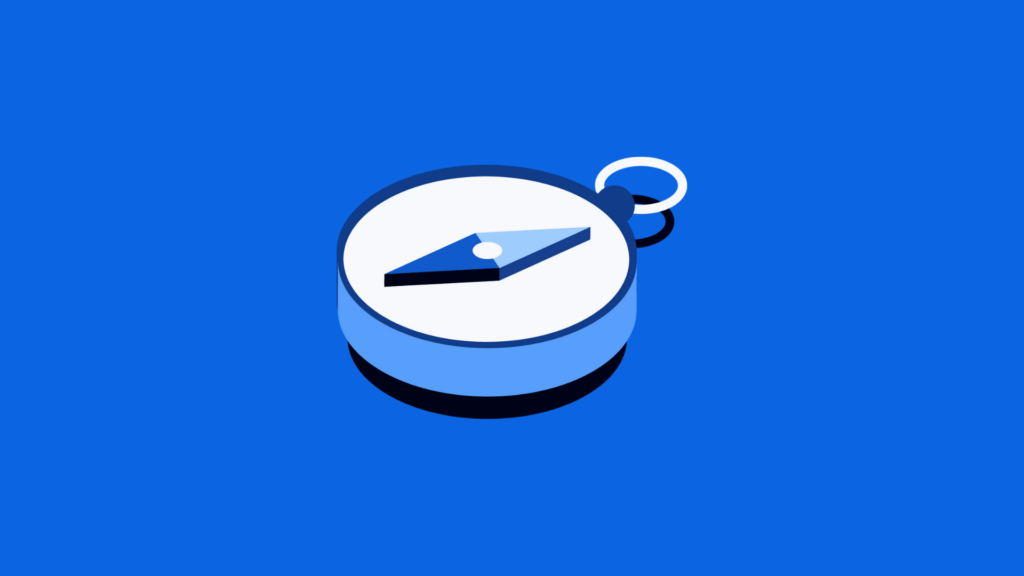- Step-by-Step Guide to Mapping the Website Customer Journey
- Step 1: Define Goals and Objectives
- Step 2: Identify Key Stages of the Journey
- Step 3: Collect Quantitative Data Using Mouseflow’s Journey Feature
- Step 4: Gather Qualitative Insights from Mouseflow
- Step 5: Segment User Personas
- Step 6: Identify Touchpoints and Pain Points with Mouseflow’s User Journey mapping tool
- Step 7: Create a Visual Journey Map
- Step 8: Test and Iterate
- Tools and Techniques for Effective Customer Journey Mapping
Mapping the customer journey is essential for businesses aiming to understand user interactions, identify friction points, and optimize the website experience. This guide provides an in-depth, step-by-step approach for mapping the website customer journey, covering essential quantitative and qualitative analytics, with tailored strategies for B2B SaaS and B2C eCommerce.
Step-by-Step Guide to Mapping the Website Customer Journey
Mapping the customer journey involves using data and insights to refine each stage and meet users’ needs. Here’s how to map the user journey, with clear, actionable steps for both B2B SaaS and B2C eCommerce.
Step 1: Define Goals and Objectives
How to Do It:
Define specific goals for journey mapping. Examples include increasing conversions, reducing cart abandonment, or improving retention.
Set SMART goals (Specific, Measurable, Achievable, Relevant, and Time-bound) to ensure each objective is clear.
For B2B SaaS:
Goals might include increasing free trial sign-ups, improving trial-to-paid conversions, and understanding onboarding challenges.
Example: “Increase free trial sign-ups by 20% in the next quarter by refining the Awareness and Consideration stages.”
For B2C eCommerce:
Goals may include reducing cart abandonment, increasing average order value, and boosting repeat purchases.
Example: “Reduce cart abandonment by 15% by optimizing the Decision and Checkout stages over the next two months.”

Note
Your website user journey map relies on your ability to identify your target personas. The quality of your customer experience will depend heavily on how well you know your target audience.
Step 2: Identify Key Stages of the Journey
How to Do It:
Outline the main journey stages: Awareness, Consideration, Decision, Retention, and Advocacy.
Describe each stage in terms of user needs and motivations to set the foundation for data collection.
For B2B SaaS:
- Awareness: Prospects discover the brand through SEO, content, or LinkedIn.
- Consideration: Users explore product features, watch demos, and read case studies.
- Decision: Users sign up for a free trial or schedule a demo.
- Retention: Onboarding, support, and customer success programs engage users post-purchase.
- Advocacy: Satisfied users leave reviews or refer new clients.
For B2C eCommerce:
- Awareness: Shoppers find the brand via social media, SEO, or ads.
- Consideration: Users browse products, compare options, and read reviews.
- Decision: Users add items to cart and proceed to checkout.
- Retention: Post-purchase emails, loyalty programs, and personalized offers retain users.
- Advocacy: Happy customers leave reviews or share purchases on social media.
Step 3: Collect Quantitative Data Using Mouseflow’s Journey Feature
How to Do It:
- Use Mouseflow’s customer journey mapping tool to track how users navigate through different stages of your website. This tool provides valuable quantitative data, showing user paths, drop-offs, and critical customer touchpoints across the journey.
- Mouseflow’s user journey feature allows you to create custom funnels based on specific paths that users take, like navigating from a homepage to product pages, or from an introductory page to the checkout. This helps visualize and quantify each stage of the journey, pinpointing where users may encounter friction.
- Monitor high-traffic pages and track user progression to identify which pages perform well and which might need optimization based on user engagement.
Key Metrics to Track in Mouseflow:
- Conversion Rates: Set up conversion funnels in Mouseflow to see how effectively users are progressing through each journey stage, from Awareness to Decision. Conversion rates help quantify user flow and identify areas needing optimization.
- Drop-Off Points: Identify where users leave the journey, such as exiting a product page or abandoning a checkout. Drop-off points provide insights into potential friction, so you can adjust content or design to encourage continued engagement.
- Time on Page: Use Mouseflow’s page analytics to track how long users spend on key pages, indicating where they are most engaged versus where they may lose interest.
For B2B SaaS:
- Track user paths from landing pages or content pieces to demo sign-ups or trial pages. Set up conversion funnels that follow users from initial interest through onboarding to understand each journey stage.
- Use Mouseflow to monitor high-drop-off points in the onboarding process, allowing you to streamline the user experience for better trial-to-paid conversion and increase customer retention.
For B2C eCommerce:
- Create conversion funnels to track the flow from product viewing to checkout completion, identifying common drop-off points such as the cart or payment pages. You can use Mouseflow for customer journey analytics.
- Monitor time spent on product pages and check if users are engaging with key elements (e.g., product descriptions or reviews). This can highlight where users need more information or reassurance before purchasing.
- By leveraging Mouseflow’s website customer journey feature to gather quantitative data, you gain a clear, data-driven understanding of each stage in the website customer journey. This insight allows you to fine-tune pages, CTAs, and navigation, ensuring users can progress smoothly toward conversion and retention.
Step 4: Gather Qualitative Insights from Mouseflow
How to Do It:
- Use session replays and heatmaps in Mouseflow to observe user behavior on each page, seeing where they click, scroll, or hesitate.
- Customer feedback and customer satisfaction: Use Mouseflow feedback survey tool to get qualitative data that can help you refine your customer persona. Deploy surveys to collect direct feedback on customer pain points, satisfaction, and overall experience. Mouseflow’s surveys can be customized to appear on specific pages or stages.
For B2B SaaS:
- Use session recordings to observe navigation during onboarding, identifying potential areas of confusion.
- Deploy exit surveys for trial users to ask why they didn’t convert.
- Use heatmaps on demo pages to track interest in specific product features.
- Conduct a survey on your existing customers to find out what makes them continue using your products. Use this information to fuel your digital marketing strategy.
For B2C eCommerce:
- Use heatmaps on product and checkout pages to see where users are focusing or where they may need more guidance.
- Set up a survey on the checkout page to ask users why they didn’t complete a purchase.
- Watch session replays to identify any patterns of hesitation on product pages.
- Get customers perspective on your experience by using feedback surveys at different customer touchpoints.
Step 5: Segment User Personas
How to Do It:
- Segment users based on demographics, behavior, or source (e.g., new vs. returning users, social media traffic).
- Create personas for each segment, including their goals, challenges, and needs.
For B2B SaaS:
- Segment by role (e.g., decision-maker vs. end-user) and by company size or industry.
- Create personas for trial users versus those engaging primarily with marketing content.
For B2C eCommerce:
- Segment by shopping behavior (e.g., frequent buyers vs. first-time visitors) and demographic data (e.g., age, device type).
- Create profiles reflecting buying motivations, such as price sensitivity or product quality focus.
Identify Touchpoints, Pain Points, and Friction with Mouseflow’s User Journey Mapping Tool
How to Do It:
- Identify every interaction users have with the website, from entry points to conversion steps.
- Use session replays and heatmaps to find the reason for high-exit points and areas with lengthy dwell times, signaling friction.
For B2B SaaS:
- Map out touchpoints like blog posts, demo pages, and customer support.
- Identify pain points in the onboarding process using session recordings.
- Identify friction: Review drop-offs during trial sign-ups or demo interactions to locate where users may feel confused or unmotivated to proceed.
For B2C eCommerce:
- Identify touchpoints like product listings, add-to-cart buttons, and checkout pages.
- Look for patterns in cart abandonment or drop-offs on high-interest product pages.
- Identify friction: Use heatmaps to analyze areas where users hesitate during the checkout process, such as form fields or unclear CTAs.
Learn more about automatically identifying friction and pain-points in your website journey with Mouseflow.
Step 7: Create a Visual Journey Map
How to Do It:
- Use a diagram tool (e.g., Lucidchart, Canva) to outline each stage, highlighting user touchpoints, pain points, and improvement areas.
- Include visuals to represent each stage, making it easier for teams to reference and collaborate on journey optimization.
- Grab a screenshot for your segmented audience from Mouseflow’s user journey mapping tool as evidence of current patterns.
For B2B SaaS:
- Show touchpoints like trial sign-up, onboarding, and customer support.
- Highlight areas where users commonly drop off during onboarding.
For B2C eCommerce:
- Visualize touchpoints from product discovery through checkout.
- Indicate stages where users abandon their carts or drop off from product pages.
Read more on Visualizing the Customer Journey and how to Create a Journey Map.
Step 8: Test and Iterate
How to Do It:
- Implement data-backed changes and test their impact on engagement and conversion. Use A/B testing to compare adjustments like CTA design or checkout process.
- Update the journey map quarterly to adapt to evolving user behaviors and data insights.
For B2B SaaS:
- Test adjustments in the onboarding process to improve conversion from trial to paid users.
- Run A/B tests on CTAs or content to see what resonates with each user type.
For B2C eCommerce:
- Test layout changes in the cart or checkout to reduce abandonment.
- Experiment with CTAs and discounts to boost conversions on product pages.
Tools and Techniques for Effective Customer Journey Mapping
Mapping the customer journey relies on a balanced approach between quantitative and qualitative analytics. Mouseflow’s features offer comprehensive data to map the journey effectively, blending behavioral insights with feedback mechanisms.
Quantitative Analytics
- Google Analytics, Mixpanel, Amplitude: Track user metrics like page views, traffic sources, bounce rates, and conversion rates. Set up funnels to observe user flow.
- Mouseflow’s Funnels: Track specific user paths and see where drop-offs occur, helping you pinpoint friction points.
Qualitative Analytics
- Session Replays and Heatmaps: Use Mouseflow’s tools to observe clicks, scrolling, and interactions, gaining insight into user focus and engagement.
- Surveys: Mouseflow’s surveys allow you to capture qualitative feedback on pain points, satisfaction, and motivations. Target surveys to specific pages or actions for context-relevant feedback.
Conclusion
Mapping the website customer journey is essential for any brand aiming to deliver a smooth, engaging experience that meets user expectations and drives business outcomes. By understanding each stage of the journey—from Awareness to Advocacy—businesses can align website content and functionality with user needs, identify and resolve friction points, and optimize touchpoints for higher conversions and retention.
Using both quantitative and qualitative analytics through tools like Mouseflow allows businesses to capture a complete picture of the user journey, providing valuable insights for data-driven improvements. By implementing the steps outlined in this guide, companies can create a journey map that not only clarifies the user experience but also empowers teams to make impactful, user-focused changes.


